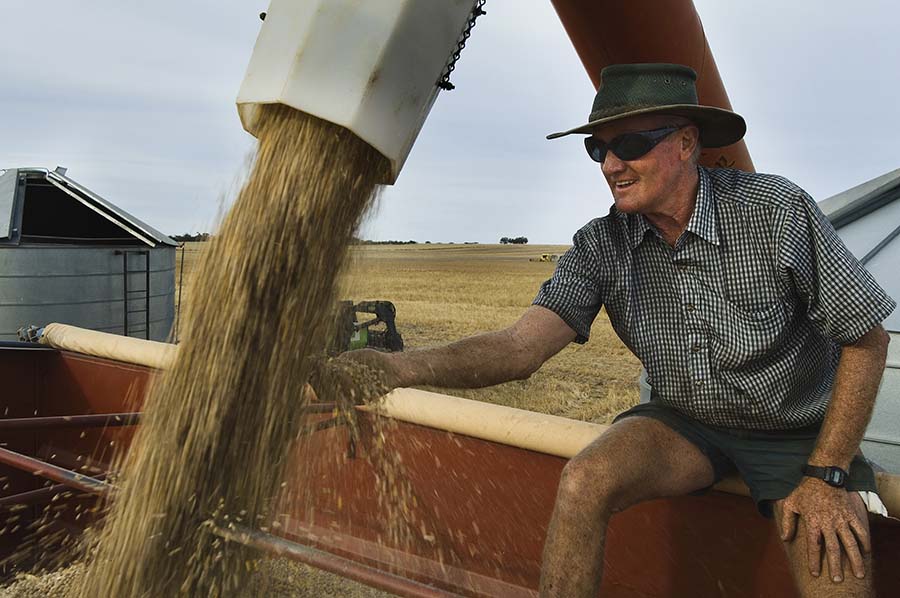GRDC investment in lupin breeding underpins productivity
The challenge
Narrow-leafed lupins have become an integral part of Western Australian farming systems over the past 30 years. Lupin crops deliver valuable productivity benefits by reducing the need for nitrogenous fertiliser, providing disease breaks and boosting cereal yields.
Narrow-leafed lupin (NLL) has a relatively short history of cultivation, with the first fully domesticated NLL cultivars adapted to Western Australian conditions were released in the 1970s. This marked the beginning of grain lupin cropping in Australia, with the industry growing rapidly in the 1980s and 1990s, reaching peak production of 1.5 million tonnes in 1999.
However, since then, production has halved due to factors such as a lack of weed control options, large variability in the yield stability of current commercial varieties and market prices.
Nevertheless, the suitability of lupins to the deep, acid sandy soils that characterise vast areas of the Western Australian wheatbelt is widely recognised, suggesting that genetic advancement holds the key to improved adoption of lupins by growers and the future viability of the western lupin industry.
Adaptability of NLL varieties has proven problematic with the recent domestication process creating a tight genetic bottleneck. Selection for the all-important domestication traits has reduced the founder gene pool to just a handful of parents resulting in limited adaptation of commercial NLL varieties to other Australian cropping zones.
The response
Over the years the Grains Research and Development Corporation (GRDC) and DAFWA (now Department of Primary Industries and Regional Development – DPIRD) have co-invested in the breeding and commercial release of lupin varieties and helped underpin the productivity and sustainability of farming systems on sandy acid soil types.
Breeding efforts have successfully focussed on yield with current varieties yielding at least double that of the first variety ever released; as well as possessing improved resistance to diseases such as Phomopsis stem blight and anthracnose; aphid resistance; and seed quality.
However, in a bid to accelerate the rates of genetic gain in lupin breeding through the injection of commercial breeding expertise, GRDC and DAFWA announced in 2016 that Australia’s largest plant breeding company, Australian Grain Technologies (AGT), would add lupins to its grains breeding portfolio.
GRDC’s collaborative breeding activities with DPIRD, New South Wales Department of Primary Industries and Pulse Breeding Australia have delivered a number of new and improved NLL lupin varieties to growers in WA and the eastern states.
This includes the development of three NLL varieties under the DAW00237 Lupin Breeding for Australia investment including PBA Jurien – a widely-adapted, high-yielding sweet lupin variety with anthracnose resistance, metribuzin tolerance and added resistance to both phomopsis and grey spot.
The impact
Between 2013 and 2017, GRDC contributed $2.5 million to the project with the remainder contributed by research partners. This combined investment has the potential to deliver approximately five times its value in benefits to industry, with an estimated five per cent yield increase compared to the Mandelup variety.
At full adoption over a production area of 480,000 hectares, this yield increase would equate to an additional 54,373 tonnes of lupins produced, worth $15.2 million annually at a price of $280/t.
National Variety Trial (NVT) results indicates that the increase in yield derived from PBA Jurien over that of Mandelup on average will equate to around $40 per hectare in additional revenue for WA grain growers. This estimate is based on 400kgs a hectare at $280 per tonne.
Western Australian grower Ian Broad has seen first-hand the benefits of improved lupin varieties having grown lupins for more than 35 years and is a strong advocate for continued investment in the pre-breeding and breeding sectors.
“There’s been a massive improvement in varieties over that time, particularly in terms of chemical tolerance and yield,” he said.
“In our production environment, it’s quite possible to achieve a 2.8-3 tonnes per hectare average given a favourable season which simply wouldn’t have been possible with the old varieties.
“They also offer significant benefits right across our mixed farming system – some of our paddocks are under a lupin-wheat rotation which has proved extremely effective from both a production and profitability perspective.”
“The introduction of a genetically modified or even an imi-tolerant lupin would be a game changer but in the interim time, we can make significant advances with improved agronomic packages and management, particularly in regard to weeds.”
Was this page helpful?
YOUR FEEDBACK

